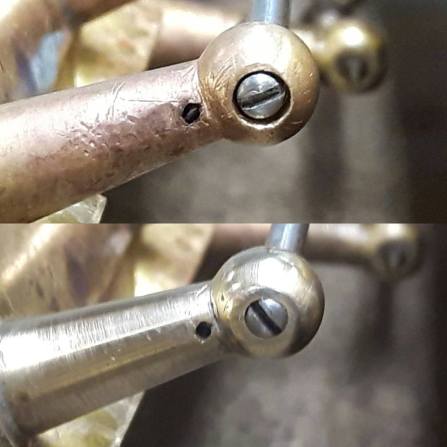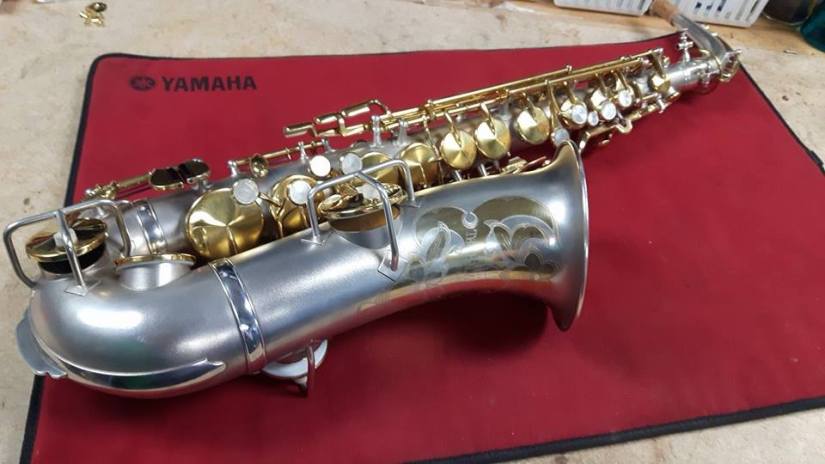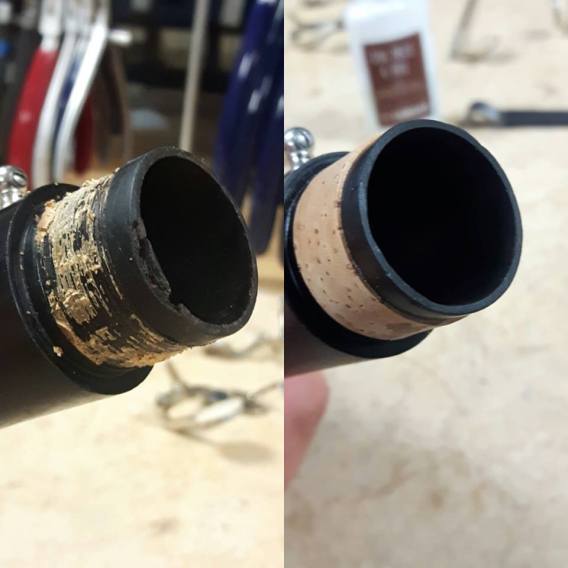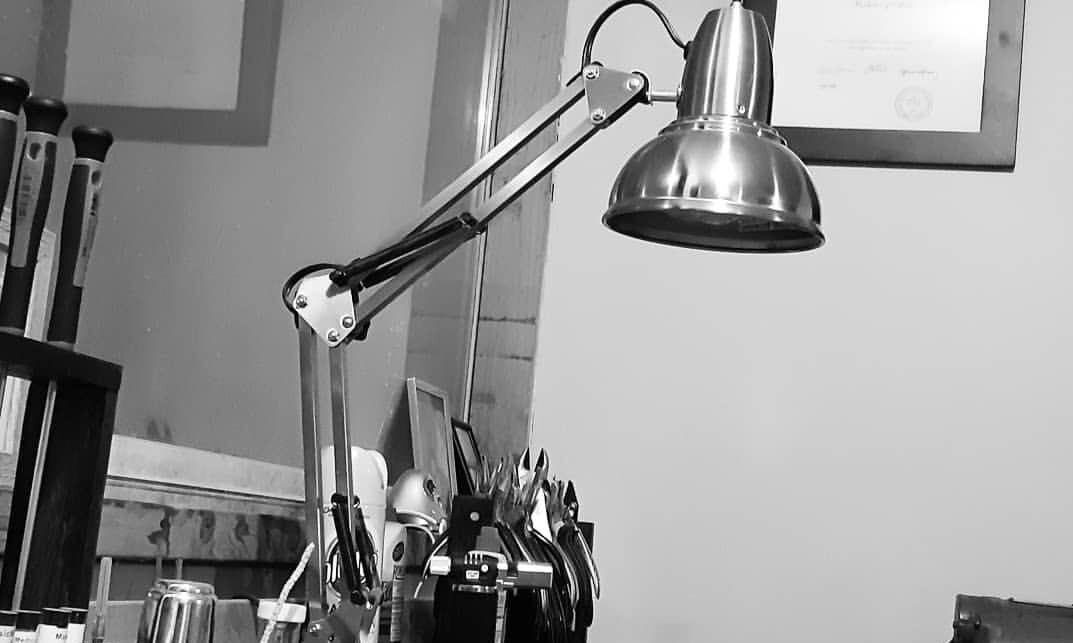Hello and welcome to my first blog post. I thought a good place to start my blog, would be to tell you a bit about how I got started in woodwind repair and what some of my personal philosophies and principles are behind it. I started 18 years ago, and like playing musical instruments, repairing is a life long process…
I am originally from Waverley, Nova Scotia (a small town outside of Halifax). Like most kids in public school, I got the opportunity to play in the school band when I was in grade six. I was very enthusiastic about music and the saxophone in particular. I continued all through high school and picked up clarinet and flute along the way as well. I was playing in provincial bands and even playing professional gigs before I graduated from high school. During on of my many visits to “MusicStop” (The largest music store in the region, which has since been bought by Long & McQuade) I was approached by the store manager, and to my surprise, was offered a job. I was asked if I would be interested in working in the band repair department. I jumped at the chance, although telling them I had no experience whatsoever. “That’s okay.” the manager told me, “We will train you.”
And train me they did. I was incredibly lucky to apprentice with the senior woodwind technician at the time, Mr. Marius Kowalski. Marius (originally from Poland) worked as a woodwind technician at “Howarth of London” in London, England where he worked on the high end instruments of the London Symphony Orchestra, before he came to Canada. Needless to say, I had the best possible teacher. Marius is an incredible technician, craftsman and teacher, and as such, passed on the concepts to me.
The first thing I had to do under my apprenticeship with Marius, was to take apart my own saxophone. A little reluctantly, I took my saxophone apart key by key, rod by rod, until I was left with a tube of brass, full of holes and very sharp needle springs, which I’m sure I found the end of each and every one. I then had to clean everything and put it all back together, within the workday and make sure it all still functioned. I left that day with my instrument in its case, and several keys in a bag. I put the rest of the keys back on at my grandmother’s kitchen table, and by class the next day, my saxophone was playing fine, and was squeaky clean.
At my next repair lesson with Marius, he pulled an old Czechoslovakian tenor saxophone out of the back room and said “Okay, you are going to overhaul this“. Naturally I asked “What’s an overhaul?” Over the next several days, I completely took the instrument apart. The keys came off, the key corks and felts came out, the pads came out of the key cups, dents were removed, tone holes were made level, all of it was replaced, and all of it was set back up again. After I took the key clamps off, I dropped in the leak light to see how my first overhaul had held the work. The saxophone lit up like a Christmas tree. My first overhaul, was not so good. Marius showed me each and every little detail, everything I had missed, and showed me how to make it better next time. This process was repeated over and over again. I would complete an overhaul and submit if for inspection, each and every little thing would be scrutinized and pointed out. Then more overhauls. Eventually I got to the point where Marius would tell me “Something is wrong, but I’m not going to tell you what it is.” I would have to search through the instrument and find whatever small problem was left. A small leak, a tiny gap of double action, a key height that was too low. One day I completed an overhaul and passed it in for inspection. The leak light went in, the action was inspected, it was play tested. The horn was passed back to me with a nod and “Okay“. That “Okay” was like fireworks and Pom Poms to me. I could not have been more excited.
I thought I had done it! I thought I had figured it out. But I realized the instrument was “Okay”. Since then my understanding and definition of what an overhaul is has drastically changed. That “Okay” was perhaps one of the greatest lessons I have ever had. My view of repairing musical instruments is that they are never to be just “Okay”, they must be as close to “Perfect” as possible. Perfect is a pursuit that every technician should be striving for.

After five years of apprenticing, my life took a change. I left Nova Scotia to move to Toronto. I was accepted to Humber College, where I studied woodwind performance. I got to study with great Canadian musicians like: Don Palmer, Pat Labarbera and Kirk MacDonald. I was also repairing. I continued to repair in a mini shop I had set up in my dorm room. Not exactly something the school residence would have been okay with, but I had clients, what is a guy to do? From my second to fourth year of Humber I worked as the only woodwind technician at “Steve’s Music” in Toronto. Where as “Steve’s” is primarily a guitar store, the support needed for a functional woodwind shop was somewhat lacking. I moved shops to “St. John’s Music“. There, I was able to promote myself and I had the opportunity to start building my own brand. “St. John’s Music” was special for another reason as well. It’s where I met my wife, Nadia. After working for “St. John’s Music” for four years I found myself moving onto another shop. I now work for “Long & McQuade” and I have been there for the past two years. I am also now in the process of building my own shop at home in Brighton, Ontario. The past eighteen years went by quickly, and were filled with thousands of instruments.
I have furthered my education in Woodwind repair through various NABIRT sponsored clinics, The Yamaha Service Advantage Course and continued study with Marius when I had the opportunity. Like playing, the key to all of this, is practice. I spend eight to ten hours on my work bench, five to six days a week. Each and everyday my goal is to be a better technician than I was the day before.
Life long learning is one of the principles I always bring to my repair bench (among other places). There will always be new and better ways of doing things, new materials and better parts to use, and new tools to utilized. If as a technician you have stopped learning (or think you have), you simply aren’t doing your job anymore.

Principles and philosophies behind instrument repair is something that I think about quite a bit. It is as important to think about these concepts, as it is to know how to use a bench motor. Let me give you an example of what I mean: In my opinion, one of the essentials of doing quality repairs, is to do so from a completely relaxed state of mind and to be very patient. If you are not relaxed in whatever procedure you happen to be performing, you can’t execute it with precision. Patience is simply a must for precision. If you are trying to beat the clock, you may get everything back together in one piece in record time, but does the instrument make you want to play it? Do the keys fall onto the tone holes with a satisfying touch, or do they squish? Does the tone ring out as soon as the airstream hits the reed or is there an uncomfortable delay? I have always said to my fellow technicians how much I enjoy a “Meaty” repair.

Another principle I always bring to my repair bench is the understanding that every instrument and every musician is different. What will be exactly what one musician wants is not what another will want. The venting on one instrument won’t allow another to speak the same way. This is why I really enjoy talking with musicians, building a relationship and helping them figure out how they want their instrument to feel and play. Even the esthetics are something I enjoy discussing with musicians. Do they want the bare brass to be polished of leave the patina? Do they have a preference as to which colour the felts are? and certainly the choice of pads and resonators they want installed in their instrument. We are all individuals, and in this instance we are expressing ourselves through music. I see no reason why the tools we use to do this, shouldn’t be as individual as we are.
Repairing and restoring woodwind instruments is what I am passionate about. I love what I do, and I love sharing it. Thank you so much for taking the time to read this blog. If you have any questions or comments, please let me know, I would be happy to speak with you.
Dominique J. Morier

